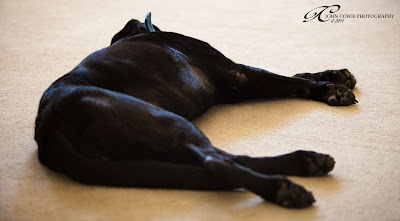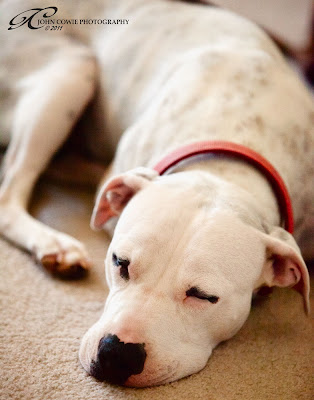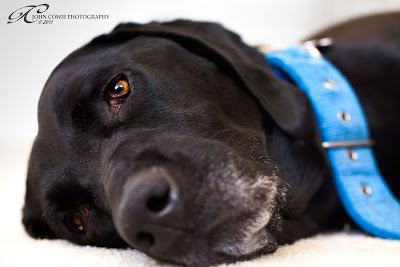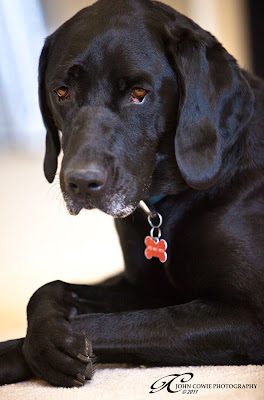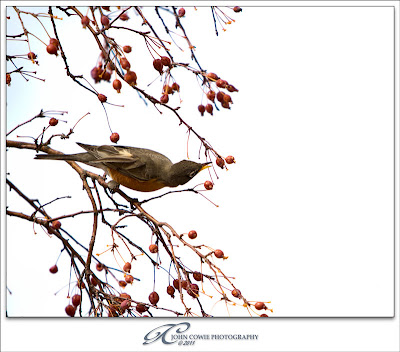Recently I had a brief chat with a friend of mine regarding what goes through your mind (or more importantly what doesn't) when you're trying to get a great shot and are feeling rushed. How easy it can be to overlook depth of field or how the background interacts with the point of interest. Is the sky blown out or the shadows losing details, and on and on and on.
It got me to thinking about all the "rules" I've learned. The one's I've internalized and the ones I'm still combating. More importantly, it got me to thinking about how I shoot - do I consider the rules when I'm framing my shots, what factors do I consider? And the answer came back - not many.
I looked back through my history of images, remembering the frustrating times when I'd beat myself up for not remembering the simple things: ISO is a variable too, don't cut off their head or feet or crop at their joints, and on and on. And I thought about what I do now...
So, today my dogs and I went for our walk and I took my camera to shoot some birds. My friend told me there were these robins hanging out in some trees, and they'd let you get pretty close. Too close and they'd fly from tree to tree, but they'd never leave.
True enough, that's what they did. Although the getting close part wasn't working so well for me. At least, not with birds in the lower branches. Might have something to do with the dogs not sitting still.
As I prepped for this post, I thought about what went through my mind as I made my images: I considerwd exposure, letting the cloudy sky blow out a bit so the birds were properly exposed. I considered where to position myself to eliminate branches between us as much as possible, and I considered the rule or thirds (sometimes). Oh, and I'd decided before I even got there that I was going to minimize depth of field to keep the attention on the birds.
As I reviewed and processed the images, I was reminded of those rules I hadn't thought of. What I like to call the lucky accidents ( I seem to have a lot of them).
Rules like:
 |
| Don't position subjects so things are growing out of their head, neck, etc. |
|
This little guy
looks like he has a bit of a mohawk but it's a nub on the branch behind him.. And since he's so close to it his head is blending in with that branch. This is an example of "go back and do it again!".
 |
| When your subject is looking to the side, compose more space in front of him than behind |
The idea is to keep your eye from being drawn out of the picture. Now, I didn't consider this rule till I was cropping it on my computer, and I can't tell you why I put the little fellow right in the middle (which also breaks the rule of thirds, by the way) when I did, except to say it felt right.
 |
| Rule of thirds, and avoiding things that dissect your subject |
Seems I broke this one more than once. But here again, this crop felt right to me during post processing. And in my defense, I'd taken a step to get closer and the fellow turned slightly away. I quick-snapped this shot before he flew off. And sure enough, just after I pressed the shutter he did.
As to the branch passing through his head, while not the optimum picture, it's better than the first one because his head is separated from the branch and easily identifiable. Would I have taken the picture if I'd thought about this rule? Most likely not. The second image above it is indeed much better. But if you do break it, at least make sure they don't merge as they did in the first one.
 |
| Keep your foreground and background simple. |
Now, really - how can I declutter a tree??? Here, this was an artistic decision I made to have the bird play a little "Peek a boo". And with the narrow depth of field blurring the branches surrounding him your eye is naturally drawn right to him. AND I obeyed the rule of thirds.
 |
| Avoid busy surroundings |
Same rule as above, different way to think about it. But here again, I think it works. With the majority of the branches in soft focus your eye is drawn to the bird. The larger branches bring you in from the sides and lead you right to him (no, I'm not a male chauvinist - he might be a she but I ain't looking up his skirt to find out).
 |
| Lines and objects dissecting your subject. |
This shot appeals to me in that the bird is popping out from his surroundings despite all the clutter. This is one of those times I think breaking the rule works. As does the one above it. Somehow the clutter works in these shots. At least, it does for me.
So, how big a deal is it to consider all the variables when you're shooting? Depends on what your shooting and why, doesn't it? If your doing a paid gig and the client is looking for something very specific then you'd best make absolutely sure you're taking everything into consideration. Even if you're rushed. And you will be, you can count on that.
If you're out on vacation, or just walking about or even setting up a shoot to capture something you've been thinking about, it's not the end of the world if you forget something. Chances are you can try again at a later date. But these are the perfect time to practice and hone your technique. Just don't beat yourself up - you're on vacation, remember?!
Digital cameras have been a god-send when playing and practicing. The instant feedback lets you look at your crop, your depth of field, background clutter, etc. It affords us the opportunity to fix the little things we tend to forget.
And as I considered what I was going to write on this blog it occurred to me that this instant feedback has been the method that has helped me internalize those key rules that are most important to me. Things I used to agonize over while shooting I now do as naturally as breathing.
Some things that I've internalized, strangely enough, include conscious thought - what camera settings do I want to use, where should I set my white balance, is there anything in the frame that takes attention away from my subject? what's lying along the edges of my frame? It's like an internal checklist that automatically runs when I pick up my camera.
Repetition builds habit, and done right, these kind of habits can make all the difference in the world.
Hope you enjoyed...
